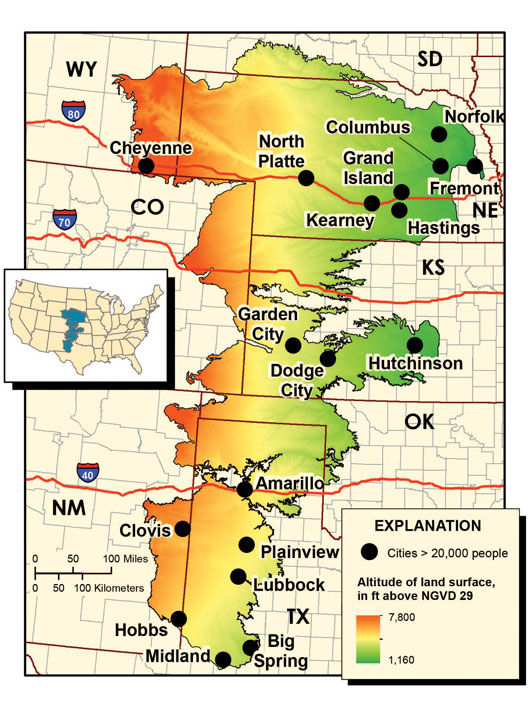Pass the whiskey.
Americans use more water per person than citizens of any other country — 457,018 gallons per head per year: Face the Facts USA.A Wyoming study has found E. coli, ammonia and chloride in tributaries of the Belle Founche River writes Laura Hancock reporting in the Casper Star Trib:
The report – technically called a Total Maximum Daily Load report, with “load” referring to the toxins loaded into the river — could be altered as a result of public comments. Then it will be submitted to the administrator of Wyoming Water Quality Division and the U.S. Environmental Protection Agency.Even South Dakota's state climatologist says the speed of change "has people very concerned."
From an Associated Press report in the Yankton Press and Dakotan.
University of Nebraska-Lincoln climate professor Robert Oglesby, who researches the causes of droughts, said temperatures in Nebraska are expected to rise by 4 to 10 degrees Fahrenheit by the end of the century. He also said extreme weather events will be more common and more extreme in the coming years.The Nebraska legislature has advanced a bill with an amendment that would charge the state's Climate Assessment and Response Committee with examining the future effects of climate change on farming, water and forests. Its sponsor believes humans are responsible for warming beyond historically observed cycles.
JoAnne Young writes in the Lincoln Journal-Star:
Nebraska has had warmer than normal temperatures since the 1970s, especially in the past 10 years, they said. And future trends of this century of precipitation show a general drying in summer and autumn and wetter winters. Springs could be wetter in the north and drier in the south.Hat tip to Fred Knapp, NET News Nebraska.
Comes this intersection with at least one previous post:
In 2011, the total water stored in the aquifer was about 2.96 billion acre-feet, an overall decline of about 246 million acre-feet (or 8 percent) since pre-development. Change in water in storage from 2009 to 2011 was an overall decline of 2.8 million acre-feet. The overall average water-level decline in the aquifer was 14.2 feet from pre-development to 2011, and 0.1 foot from 2009 to 2011.
The High Plains Aquifer, also known as the Ogallala Aquifer, underlies about 112 million acres (175,000 square miles) in parts of eight states Colorado, Kansas, Nebraska, New Mexico, Oklahoma, South Dakota, Texas, and Wyoming. The USGS, at the request of the U.S. Congress, has published reports on water-level changes in the High Plains Aquifer since 1988. Congress requested these reports in response to substantial water-level declines in large areas of the aquifer. --news release, US Geological Survey.The earth hater party has reacted to the US Environmental Protection Agency's condemnation of Keystone XL's infiltration into pages of the Department of State report on the doomed pipeline project. Read it at The Hill.
Nearly $17 billion has been paid out to farmers in crop insurance indemnities to cover the losses from the catastrophic drought of 2012, the government reported this week.--Who's on the Hook? Donna Vestal, Harvest Public Media.

No comments:
Post a Comment